
27 minute read
DESTINATION
DANCING THROUGH LANSING
The capital of Michigan, Lansing has a bounty of unique venues and team-building opportunities for groups to explore. BY KASSIDY TARALA
LANSING ISN’T JUST THE CAPITAL OF MICHIGAN, but it’s also the central hub for the entire state—literally; it’s located within 90 minutes of 90 percent of the state’s population, making it both eventful and accessible for groups located throughout the state.
The region, which has more than 5,000 hotel rooms, offers a variety of venues and more than 75 dining and nightlife spots within walking distance of Lansing Center, the downtown convention facility. Lansing also boasts a multitude of festivals and events that are great for companion tours and evening entertainment for meeting attendees. "The Greater Lansing area is home to over 20 craft wineries, microbreweries, cider mills and distilleries," says Tracy Padot, vice president of marketing communications for the Greater Lansing Convention and Visitors Bureau (GLCVB). "Most facilities offer tours and tastings for groups making them the perfect option for off-site special events during conventions and meetings.”
Padot says Lansing is a popular meeting destination throughout all seasons of the year. The same amenities that make it an appealing location in the summer are the same things that draw crowds in during the winter.
“In Greater Lansing, group events are important to us and treated as such. Sometimes in a larger destination you can get lost among the crowd,” Padot says. “We were also the first CVB in the state of Michigan to implement a Certified Tourism Ambassador program in 2010. We have over 500 front line hospitality staff trained as Greater Lansing CTA’s ready to serve the visiting public.”
Also, Padot notes that many planners don’t realize that the majority of GLCVB’s services are free, making the planning process for a meeting, corporate event or lengthier teambuilding retreat simple and cost effective.
American Fifth Spirits
Though Lansing is brimming with large venues and event spaces, American Fifth Spirits offers a cozy alcove for small to midsized groups. Private bookings of the tasting room are available for groups as well as cocktail classes for team-building. The tasting room, which can accommodate 80 people, can be used for events in conjunction with the newly redecorated barrel room
“Our ambiance, location, wonderful staff, and unique cocktail menu make us a prime meeting place in the downtown Lansing area. We work with each guest or client personally to ensure that we deliver the best possible experience and tailor each experience to them,” says General Manager Jessica Reed.
Reed says groups often take advantage of American Fifth Spirits’ private cocktail classes for unique team-building opportunities. During these classes, groups are able to become their own bartenders. “It’s a great idea for groups that are a little stressed, need
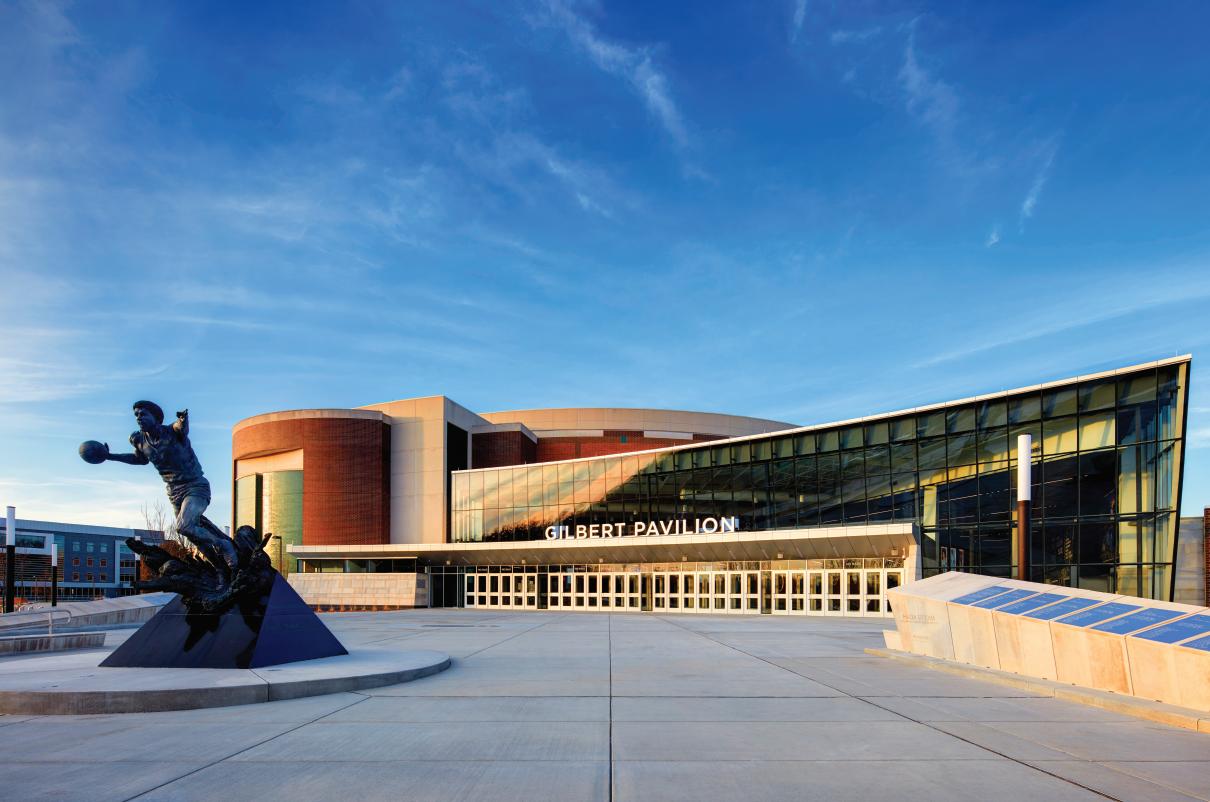
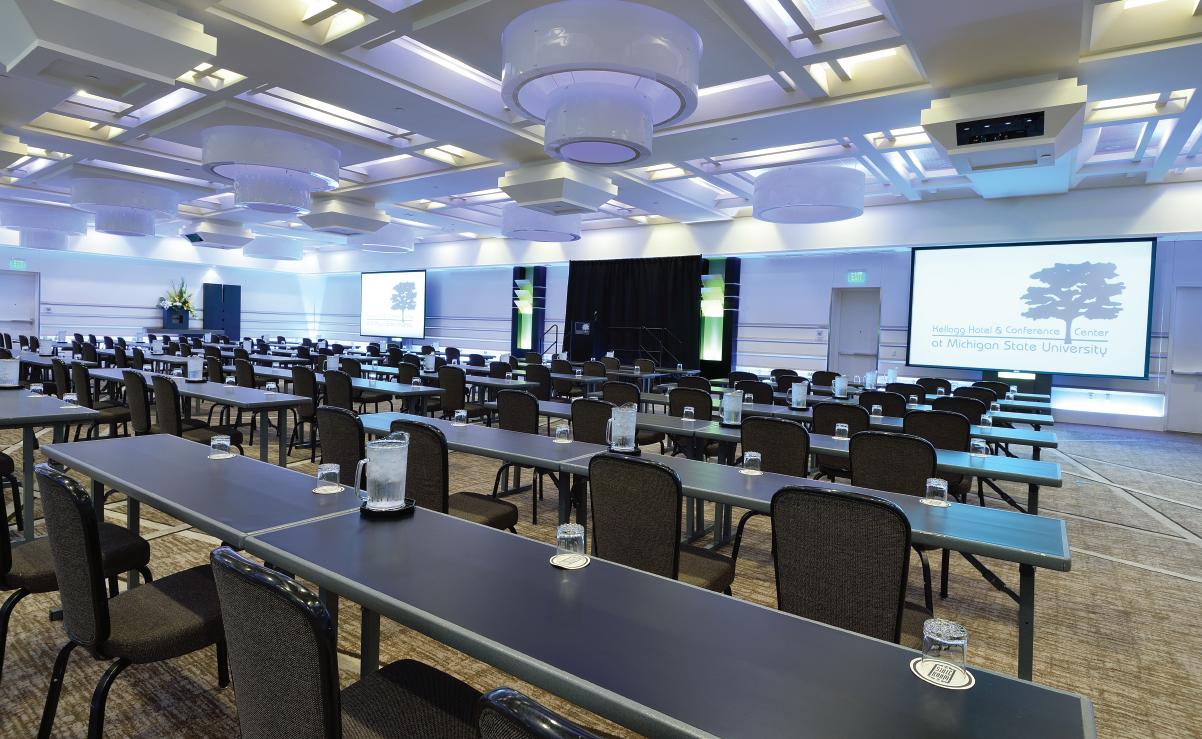

Clockwise from top left: Breslin Student Events Center; American Fifth Spirits; Kellogg Center
to laugh and just have a great time with each other outside of their work environment,” Reed says.
Costs for private reservations vary depending on the needs of the guests, but full buyouts are also available, which typically take place on Sundays. These include a $100 per hour fee plus the cost of anything else purchased. Reed says the busiest time for bookings is December during the holiday season, so planners might want to consider other seasons to avoid higher pricing.
“We are introducing craft spirits and cocktails to the community. We pride ourselves on delivering the finest quality in everything we do,” Reed adds. “We love our community and strive to stay involved in every way we can.”
Kellogg Center
With 35,000 square feet of meeting space, Kellogg Center can accommodate groups of any size from two to 1,000 guests. Between the conference rooms, reception spaces, East Patio and other meeting spaces, Kellogg Center can accommodate any group’s needs.
All food and beverage and A/V is provided on-site, and the food is prepared by the Kellogg Center’s award-winning culinary team. Menus can be arranged by the culinary staff or tailored to the needs of your group.
“Our goal is to make your experience enjoyable and seamless from beginning to end. From the sales process to event execution, we are right alongside you during the process to ensure a successful event,” says Ann Bertsch, communications manager.
Additionally, the Kellogg Center is an ideal location for team-building activities as it’s located right on the campus of Michigan State University and is minutes from attractions like Spartan Stadium, Breslin Center, Wharton Center and the Horticultural Gardens.
“Our experience is unique in the fact that our meeting planners, guests and conference attendees can interaction with our student team members to help train our future industry leaders,” Bertsch adds.
Breslin Student Events Center
Also located at Michigan State University is Breslin Student Events Center, which boasts four meeting rooms that can be used independently or jointly to form 4,000 square feet of meeting space. The arena floor is a 22,000-square-foot flat surface ideal for banquets, concerts, commencements and trade fairs.
The Breslin Center’s concourse was recently renovated to reveal more than 43,000 square feet of reception space. The North Auxiliary Gym
Impression 5 Science Center
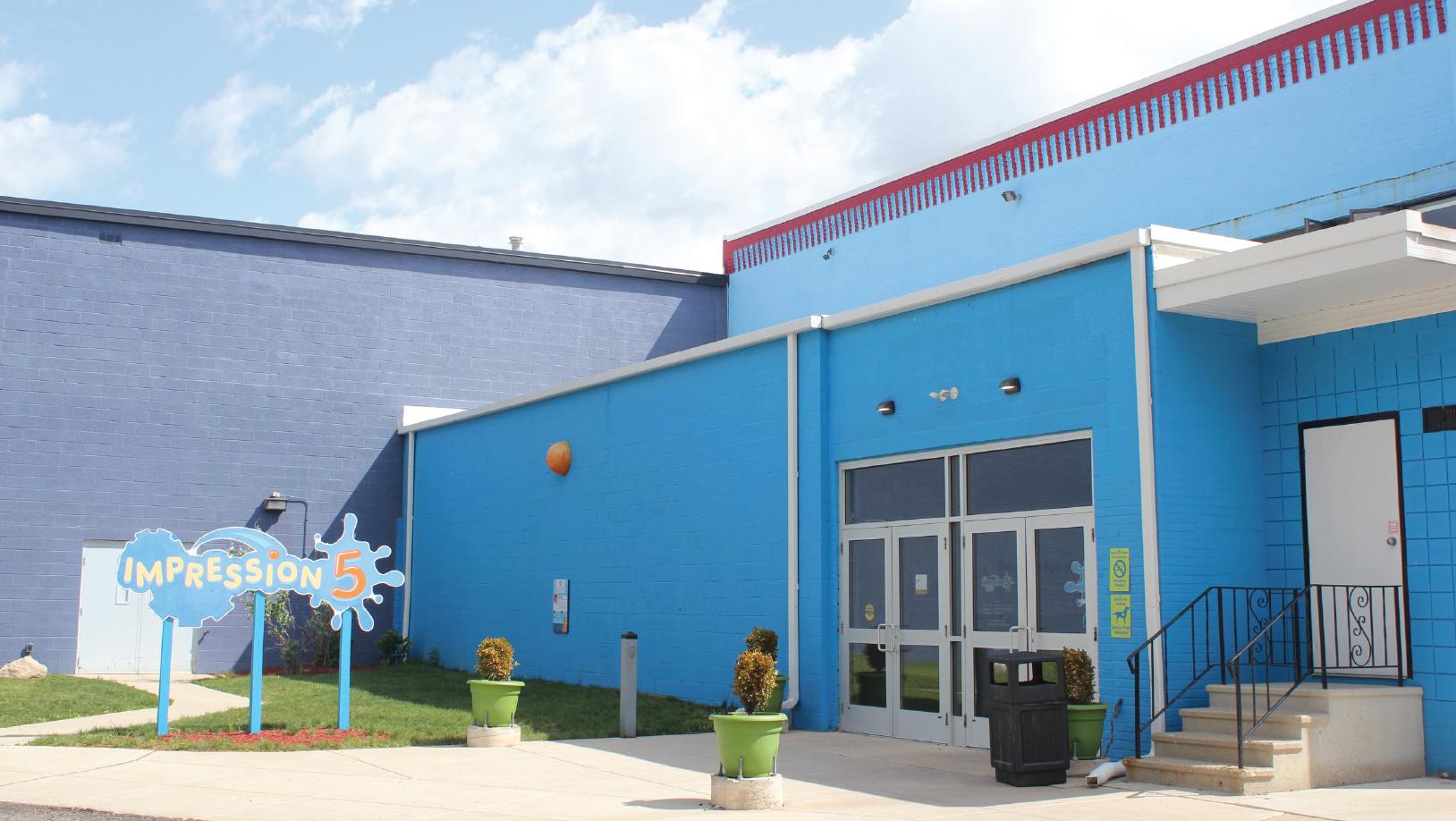
Eli and Edyth Broad Art Museum
is also available for receptions, trade fairs and other events within its 8,300-square-foot space.
The concourse now offers terrazzo flooring, advanced lighting and graphics, new restrooms and concession stands, making it a modern and convenient space for guests.
Home to the Spartans, the Breslin Center is directly across the street from the Kellogg Hotel and Conference Center, making it the perfect location in the vibrant and growing city of Lansing.
The busiest seasons at the Breslin Center are the end of August through Nov. 1, which is Spartan basketball season, and April 1 through June 15. For the most available dates, meeting planners are encouraged to book during September, July and August.
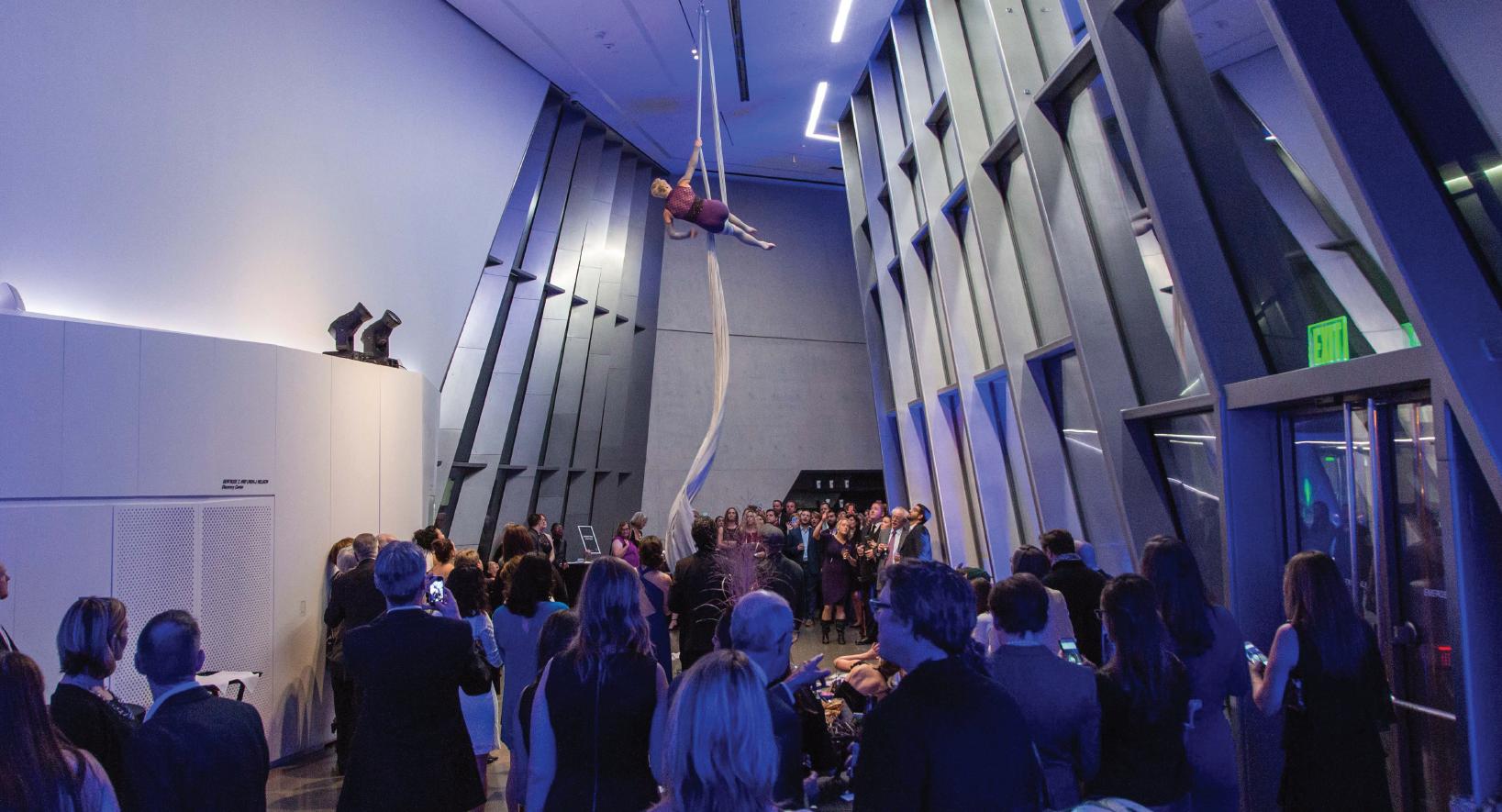
Impression 5 Science Center
If you really want to leave a lasting impression on your attendees, you’ll want to consider Impression 5 Science Center for an event, team-building activity or corporate meeting. The center can be rented in individual program spaces for up to 48 or, during nonbusiness hours, the entire facility can be rented for up to 2,000 guests.
The 28,000-square-foot facility has limited A/V capabilities, so it’s recommended planners bring their own. The historic 1880s building is made of original timber pillars and floors, which will give your attendees a blast from the past.
For team-building, groups can participate in facilitator-led customized challenges that promote creativity, collaboration and competition among the group. The hands-on science center provides opportunities to connect with science in meaningful and tangible ways, so groups should come prepared to get their hands dirty.
Eli and Edythe Broad Art Museum
Located at Michigan State University, the Eli and Edythe Broad Art Museum offers a dynamic collection of contemporary art. Designed by Pritzker Prize-winning architect Zaha Hadid, the architecture will create the perfect setting for an elegant dinner or cocktail party.
The museum rents out the Ross Education Wing & Courtyard, which can accommodate 35-120 guests; Collectors Lobby, 35-45 guests; or the entire museum with private access to the galleries, 120-250 guests.
The Ross Education Wing is the museum’s main event space and is best suited for strolling cocktail parties and seated dinners. With in-house capabilities for professional presentations, the space is also ideal for ceremonies, galas, lectures and film screenings.
“The MSU Broad Art Lab offers the opportunity to break away from the daily routine by hosting collaborative meetings, creative retreats, and team-building exercises. Groups have access to our designated art supplies, general A/V, and there is plenty of room to break off into small work groups. Groups can arrange for facilitated gallery tours, or hands-on art making experiences that tie into their company mission and staff training goals,” says Morgan Butts, director of communications. “The Art Lab is perfect for your next professional workshop, brainstorming retreat, business meeting or casual mixer. Most suitable for groups of 35-80 people.”
Because the Eli and Edythe Broad Art Museum is part of Michigan State University, its exhibitions and programs support MSU’s global focus, and its galleries are staffed with interdisciplinary students.
UrbanBeat
For a classic, historic setting, UrbanBeat will not disappoint. The 2,500-square-foot event space is housed in a historic building complete with exposed brick walls and state-of-the-art amenities. In the heart of Old Town Lansing’s art district, it’s surrounded by restaurants, boutiques and ample parking.
“UrbanBeat is a blank canvas offering a wide variety of layout possibilities, has an assortment of different size tables, and the ability to hang banners, signs, posters and

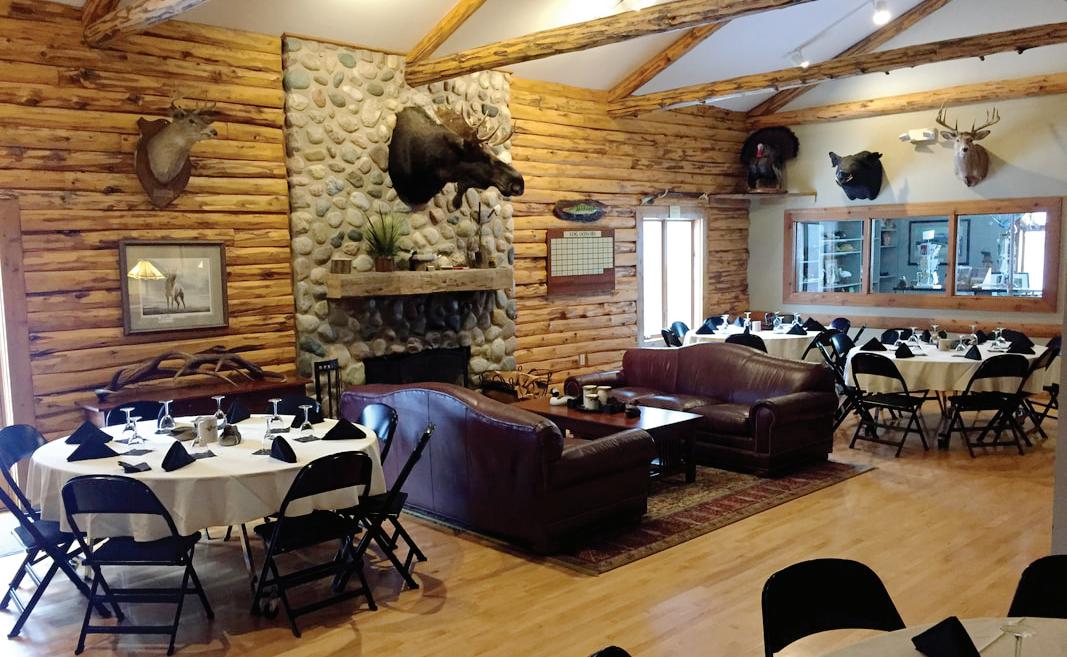
Clockwise from left: Urban Beat; James B Henry Center; Michigan Wildlife Conservancy/Bengel Wildlife Center
art on the walls,” says owner Terry Terry. “UrbanBeat can provide musicians, from solo piano and jazz trios to funk, blues and chamber music.”
Terry says UrbanBeat is designed with event planners in mind; it offers a wide range of customizable production, team-building and leadership workshops and seminars.
James B Henry Center
If anyone can ease a meeting planner’s mind, it’s the James B Henry Center. Equipped with Wi-Fi, comfortable seating, in-room climate and lighting control, soundproof walls, A/V and more, the James B Henry Center has thought of it all.
The center has four classroom-style spaces, 21 individual breakout rooms, five flexible setup executive meeting rooms and one executive-style ballroom, all of which can accommodate anywhere from one to 210 guests for business and educational programs.
“Planning an event at the Henry Center is designed to save the host time and money. Our Day Meeting package price, self-paced Continuous Refreshment Service and buffet meals, designated technology support and conference planning managers are unlike the services offered by a hotel convention center,” says Director of Sales Shana Killips.
Other than its abundance of event spaces, the James B Henry Center has access to a fullservice fitness center, spa and 18 holes of golf, all on-site. Michigan State University is also nearby for sporting events and other activities, Killips says.
If you’re trying to impress a group of animal lovers, what better place for a meeting or event than the Michigan Wildlife Conservancy/ Bengel Wildlife Center? Located smack dab in the middle of the state, the conservancy is set on 296 acres of wildlife with 4.9 miles of all-purpose trails. There are also three fishing lakes great for kayaking or canoeing with the team.
The conservancy has the largest covered patio in Michigan, a covered upper balcony, fire pit area, two conference rooms, a classroom that seats 100, the Anderson Great Room/Wildlife Lodge that seats 60, and a Wildlife Pub & Grill with Michigan craft beers and spirits. There’s also a bourbon cigar bar area for lounging outside and an abundance of parking.
Overall, the center can comfortably accommodate 350, but can host more throughout the entire property. A/V is included, and a preferred caterer list is available upon request.
The mission of the conservancy is to help educate people to help wildlife throughout the state. With several rare mammal research programs throughout the state and involvement with four local schools for field trips throughout the year, the conservancy lives its mission every day.
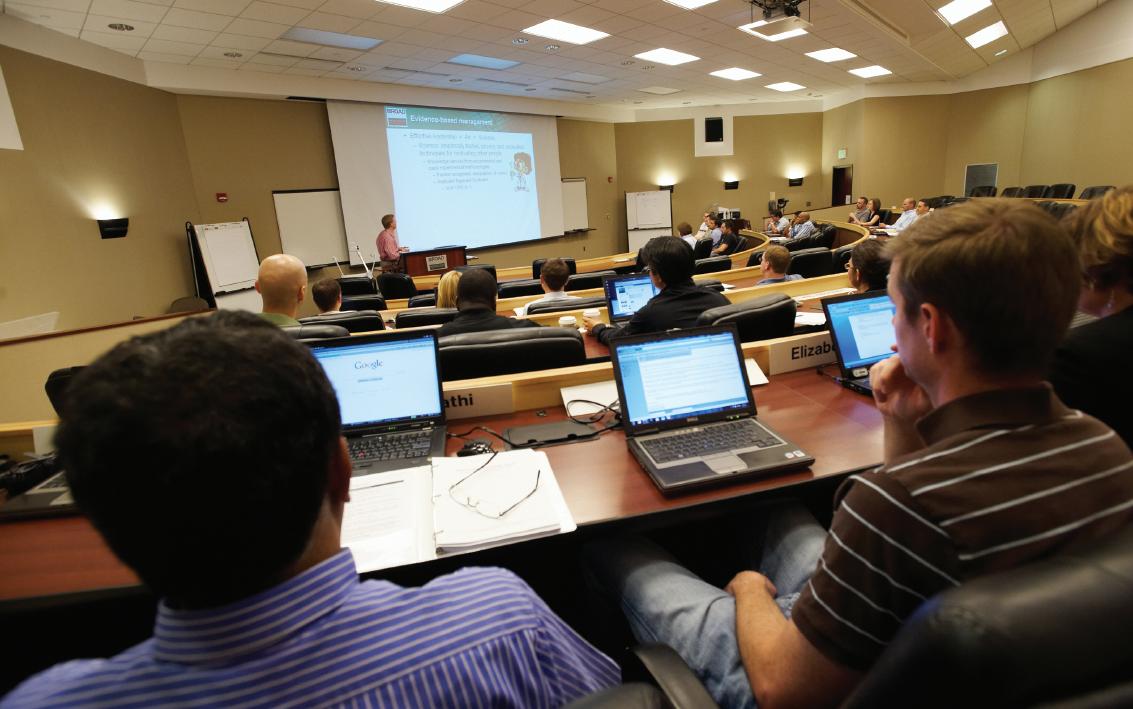
What Could Go Wrong?

By Megan Gosch
EMERGENCY MANAGEMENT EXPERTS, LOCAL PLANNERS AND LAW ENFORCEMENT PROFESSIONALS TALK TIPS, TOOLS AND TOP-OF-MIND CONCEPTS TO KEEP EVENTS SAFE AND RUNNING SMOOTHLY.
By the time the now-iconic photo of one Fyre Festivalgoer’s pitiful cheese sandwich had gone viral, social media platforms and news outlets were abuzz with shock and bewilderment—questioning how the seemingly star-studded island excursion could have resulted in half-built FEMA-issued tents, cancelled musical acts and stranded attendees. But for seasoned planners, the legendary disaster was just another in a slew of daily reminders on the importance of contingency planning and the true value of the many hours spent crafting alternate options for the emergencies they hope will never come to pass.
While most planners are well versed in the basic elements contingency planning, we’ve checked in with crowd and emergency management experts, local planners and law enforcement professionals to talk tips, tools and concepts for planners to keep topof-mind when planning their next event.
HIT REFRESH
Just as custom reigns king in today’s event design, food and beverage, and décor, cookie-cutter plans won’t do in case of an emergency—a concept planners likely already know but need to dedicate more time and effort to.
“To effectively manage an issue as it arises, contingency plans should be unique to that event,” says Crisis and Public Relations Consultant Rick J. Kaufman, APR. With over 30 years of emergency management experience, Kaufman consults with schools and organizations across the country and finds that although most clients come to him with a plan already in place, many are already years old or incomplete, requiring an audit for vulnerabilities or possible gaps in operational response.
“A solid plan should consist of elements of prevention and intervention, response and recovery and a crisis plan. The contingency plan should also account for the needs of the client, and attendees, event activities and location specifics,” he says. “In most cases starting with a general framework is OK, but you need to get more specific and drill down from there. You need answers to big questions and that effort takes a significant amount of time.”
For some, finding enough time to plan may be the biggest challenge. “We all know planners are busy and no one has spare time on their hands, but for [contingency planning] you make time. You find a way to carve out those hours,” says Evette Pittman, supervisor of the Office of Special Events for the City of Grand Rapids. “It’s one of the most important parts of the process and you need to hit the ground running as soon as possible.”
“At the end of each event, we start working on various reports for sponsors and stakeholders, but we're also beginning to reach out to potential event spaces for the following year,” says Derek Call, director of operations and production for ArtPrize, which produces a 19-day biennial art-focused event. “Working with such a large event, there's no time to waste, especially if we’re hoping to experiment or try something new in the next year, we need to get working and loop in those key staff immediately.”
TEAM EFFORT
“At their events, planners are in a unique role in that they are the most knowledgeable person in the room. They are the experts in their circumstances,” says Steven A. Adelman, an expert in safety and security at live events, head of the Adelman Law Group, PLLC and vice president of the Event Safety Alliance.
“As attendees, we tend to be anti-authoritarian when we go out to play. We don’t listen to directions or pay attention very well. We’re more concerned with who’s going to win or who’s coming out on stage or what’s the next cool display. We’re looking for our friends. We’re not looking at signage, we don’t notice exits and we probably can’t hear your PA announcements, so we’re really relying on event organizers to have the answers if anything bad happens.”
And while that may be intimidating to some, experts like Adelman and local event professionals like Andrea Trudeau, exhibit compliance and show floor director for the North American International Auto Show (NAIAS), agrees it’s important for planners to utilize the full strength and support of their team. Successful contingency planning relies heavily on a team approach, delegation and strong, clear communication.
“There’s just so much that needs to be taken into account, you can’t possibly do it all yourself. I’m the first wave of contact for all of our major automotive manufacturers, but I also work directly with exhibit management and marketing teams and we’re coordinating with our security team year-round. There are so many moving pieces, it has to be a team sport," says Trudeau.
Just as planners maintain clear and consistent channels of communication with event partners, from clients and internal staff to A/V providers and custodial staff, to ensure day of production goes off without a hitch, planners must consider how contingencies can impact all involved with their events and communicate accordingly. “You don’t want to get caught flat-footed. Issues that pop up are only exacerbated when the left
It Takes a Village
When planning one of Detroit’s largest annual events, community coordination and idea sharing are especially vital.
For North American International Auto Show (NAIAS) Exhibit Compliance and Show Floor Director Andrea Trudeau, who oversees the massive two-week event’s floor plan design and show logistics in coordination with countless event and community partners, consistent communication could not be more important when it comes to contingency planning.
With the creation of six distinct events throughout the show and a major expansion of the show’s 2020 outdoor footprint, Trudeau’s seasoned team works year-round community-wide to ensure guests enjoy a safe, fun-filled visit.
“Because we're located on an international border and we attract such a large, international audience, we coordinate extensively with not only local law enforcement and Detroit's fire marshals, but also with the Department of Homeland Security, the FBI and the Coast Guard to make sure everyone is up to speed," says Trudeau. "Our head of security also runs yearly complete department safety planning meetings and works with that team throughout the year so our plans are truly shaped by actively engaged local and national experts. It’s no small feat."
And while Trudeau and her team have built strong relationships with local safety and security agencies, the event’s new outdoor footprint has encouraged new relationships citywide.
“With a wholesale change for an event of our size expanding into the city itself with off-site locations and activities, we really need total buy-in from city departments and leaders,” says Trudeau. This year her team has been intentional in not only working more closely with the city of Detroit’s special events department and the Detroit Metro Convention and Visitors Bureau, but they’ve also connected with the city’s local ILEA chapter and local event producers, including Paxahau, the producer of Detroit’s Movement Electronic Music Festival.
“We want to keep them informed and up-to-date, but there’s also so much to learn from strategies coming out of festivals like South by Southwest and from local planners doing it right when it comes to tackling this new element we’re relatively new to. To have a chance to collaborate with these local partners makes a world of difference.”
ANDREA TRUDEAU
Exhibit Compliance and Show Floor Director, NAIAS
hand doesn’t know what the right is doing,” says Kaufman. “Everyone needs to know where direction is coming from, what their roles are and who is responsible for what, and they need to be adequately trained to take on those roles. Any confusion on those expectations can slow down response time and cause more distress or panic.”
TCF Center General Manager Claude Molinari puts these tenets into action throughout the year, ensuring each member of his team receives safety and security training annually to keep contingency procedures top of mind. “Having a strong, extensive network involved in crisis management is important. Using the plan frequently throughout the year keeps everyone alert and well trained," says Molinari. "Clear communication on roles and responsibilities with all staff is most important. In a true crisis situation, elaborate plans may be rendered ineffective. Evacuation routes and identified rally points are critical to the recovery process.”
And in most cases, successful communication and training should extend beyond the core internal team. “In addition to our full-time staff we work with a volunteer pool of approximately 800. We need to make sure each of them has the tools they might need and knows what to do in an emergency,” says Call. “We disperse emergency action plans, give everyone time to review, and attend staff meetings and volunteer orientations to help answer any questions they may have. As a crucial part of our event, they need to be in the loop.”
QUESTIONS ARE KEY
“Really, when it comes down to it, contingency planning is all about asking good questions,” says Adelman. When crafting a thorough contingency plan, planners may turn to local law enforcement and emergency responder professionals for help, “and that’s a great place to start but there needs to be more of a dialogue.”
“No matter how much time I might spend with a client, I’m never going to be as knowledgeable about their event as they are. I do know where things tend to go wrong and I know what the existing guidance is to help mitigate some of those risks. Experts may know enough about human psychology or a specific security issue, but planners need to take what they’ve learned from those conversations and adapt it to their events. The better and more specific the questions, the better prepared they’ll be,” Adelman says.
Kaufman concurs, noting “your plan can only be strengthened by the answers you’ve gathered along the way. What are the hazards to your event? Are they geographical? Are they intentional? Will dignitaries attend? Will alcohol be served? Who will provide the security and what are they responsible for? What time will doors open? What time does the event end? Which exits and entrances will be used? Your questions will range from broad high-level to the minute detail, but this is a time you don’t want to hold back. It can sound elementary, but understanding that questions like these are your tools can be powerful and keep you prepared.”
BIG PICTURE
Unfortunately, while man-made hazards and acts of violence continue to dominate news cycles and loom as a potential threat throughout the event planning process, experts worry planners may begin to miss the forest for the trees with less attention paid to other likely risks.
“The inclination is to react to what we see in the headlines. We have far too many instances of active shooters, so we pay a disproportionate amount of our attention to guns relative to the likelihood that we will have a gun-related incident at our event,” says Adelman. From the placement of directional signage and seating or stage setup to the event of a flood or an attendee health or medical emergency, “we need to be able to deal with crowd management apart from
Create a Dialogue
Derek Call, director of operations and production for ArtPrize, a Grand Rapids organization that produces a 19-day arts festival and competition that draws roughly 500,000 attendees and incorporates nearly 170 venues citywide, has found strong working relationships with city staff to be key in the event’s success.
“As the event’s point-person with the city, I rely so heavily on their expertise, especially Evette with the Office of Special Events.” says Call. “She sets me up for success with each department by communicating exactly what we have planned or aim to do. City departments know how well Evette and I work together and are eager year-to-year to find a way to ‘yes’ and make the impossible possible.”
Evette Pittman, supervisor of the Office of Special Events, has worked with the ArtPrize team for years and encourages an open-minded dialogue early in the process. “We love that the ArtPrize team dreams big. They like to be creative, but throughout their process they keep us informed so there are no surprises. No one is concealing anything until the last moment.”
At the start of each ArtPrize project, Pittman brings all relevant city departments together to discuss what the year will look like. “With everyone in one room we’re able to open up the conversation and imagine what’s possible. We also start that discussion very early in the process so we have time to make those dreams a reality,” says Pittman. “Derek may come to us and say ‘we’d like to have dancers perform off the side of a 10-story building on a busy thoroughfare,’ and with that early communication we can work out a plan to make it happen.”
Whether securing permits or coordinating public safety infrastructure, Pittman and Call work through the planning process toward a common goal. “It becomes a collaboration. Events like ArtPrize help us grow and make our city more vibrant,” says Pittman. “The more we can help planners through that process, the better the event and in the end it’s the community is who wins.”
DEREK CALL
Director of Operations and Production, ArtPrize
active shooters because crowd management must be done regardless of the reason the crowd needs to be managed. This can get us out of the trap of thinking only of guns.”
Kaufman also advises planners to focus on the task at hand when planning for the worst case scenario—the response. “We often focus too much on the threat and less on the response specific to that emergency. ‘Active shooter’ may be the buzzword these days, but any number of threats could emerge that require a similar response protocol,” he says. “The reality is it's about responding to situations we don't have all of the info for. I counsel clients to concentrate on and practice drills using consistent protocols to create cultural conditions so that they know what to do in a real-world situation.”
In consideration of the potential for violence at live events, Adelman also notes planning for substance as well as perception. “The fear of acts of violence is far more widespread than the acts of violence themselves, but addressing perception can enhance attendee confidence. Obviously you want to have the basics—security perimeters like a physical fence or use of bollards and a check of guests and their bags at the point of ingress, wayfinding signage and clear directions to exits—because visual deterrents not only help prevent bad behavior, they provide a sense of confidence to guests. In the past, uniformed security guards might have caused alarm, but these days when they see security, guests are more likely to think ‘great, they’re considering our safety,’” says Adelman.
ON THE RADAR
While active shooters may be one of the most concerning threats facing today’s live events, experts advise planners also keep issues like cyber security and climate change in mind.
“Climate change should be on everyone’s radar and may actually impact the live event industry disproportionately due to the number of events that take place outside of brick-and-mortar venues. As our climate becomes less stable, we have an increased potential for severe weather evacuations, underscoring the importance of having a severe weather action plan. Planners will need to stress site planning as well as access to accurate weather information (hint: Your cell phone app is not a reliable source of GPS-located weather information),” says Adelman.
“Issues like climate change are going to have a greater impact on events and lead to further disruptions in the industry, but today’s political climate also poses a threat. As we begin to see more cases of protest and civil unrest ... planners need to begin to plan for politically-motivated issues as well,” says Kaufman.
POWER IN PLANNING
Most importantly, although the complex process of contingency planning may be nerve-wracking at times, Adelman encourages planners to embrace the power that the practice can bring planners.
“Understanding crowd management and contingency planning gives people— regardless of age, skill set, education level or expertise—helpful things they can do in an emergency that are within their power,” says Adelman. “Being told to stand in a corner and wait for further instruction— that’s disempowering. But when you break things like an evacuation plan for severe weather or finding back-up entertainment for an artist that can’t perform down into fairly simple, easily achievable elements, there’s something everyone can do to help solve a problem and to help keep people safe—that’s empowering.”
Tools of the Trade
While the ideal combination of guides, websites and services will vary by event, local planners and industry experts have recommended a few of their go-to tools:
American National Standards Institute (ANSI): A private not-for-profit organization fostering national safeguarding standards for a range of industries, including the field of safety and security. ANSI will publish a new Crowd Management standard in early 2020 to provide planners with key questions and authoritative crowd management guidance for planning safe and secure events. ansi.org
Event Safety Alliance: Dedicated to helping event professionals mitigate foreseeable live event risks through education, skills training and advocacy, this nonprofit creates resources for planners like its Event Safety Podcast (an ongoing discussion for ideas and news from the world of live event safety), Event Safety Access Training (an online program for professionals in all aspects of event production), and "The Event Safety Guide," the country’s first published safety guidance manual created specifically for the live event industry. The Guide compiles relevant safety standards, insight from industry experts and reasonable operational practices regarding emergency planning, weather preparedness and more. eventsafetyalliance.org

The National Oceanic and Atmospheric Administration’s (NOAA) National Weather Service: The national organization provides weather, water and climate information for the general public, but can also help planners prepare for hazardous conditions that may put attendees in harm’s way. Planners can register their event with the organization’s local branch for assistance with accurate day-of forecasting. noaa.gov, weather.gov
National Center for Spectator Sports Safety and Security (NCS4): As one of the world’s leading academic research institutions in addressing sports safety and security risks and threats and offers planners a variety of online resources, best practice guides and more. ncs4.usm.edu
Tips from the Pros
Bethanie Fisher, special events and film administrator for the City of Detroit's Special Events & Film Office and Evette Pittman, supervisor of the City of Grand Rapids' Office of Special Events share their tips for successful community and public sector relationship-building. It's never too early: “Even if
you’re not the person who will take the event from start to finish, or you don’t have approving power, as soon as an idea comes up email me and we’ll figure out what needs to happen next. I’d prefer an early notice to a late application any day,” Fisher says.
Honesty is the best policy:
“Be honest. Be honest about your goals, what you want your event to be, how you see each element coming in to play. We’ve had producers downplay their events in the past, but we’re ready and open to discussing new ideas, and we can’t help if we don’t have the full picture,” says Fisher.
Study up: “In most cities, the resources are out there to help planners through this process. We have an amazing planning resource guide online that’s a great starting point for planners, but in Grand Rapids we also offer a free one-day course that covers everything you’d need to know to host an event on public property in our city,” says Pittman. “Planners learn about everything from an overview of the permit application process to recruiting volunteers and sponsors, and it’s taught by one of the city’s most experienced planners so we know attendees will take that training to heart.”
Make an appearance: “For
us, in-person meetings are huge. That’s what builds relationships, so when there’s an issue, the process will be much smoother because you’re working through it with people you know and trust,” says Pittman.
Be neighborly: “We want our
planners to be good neighbors. We ask that they dedicate time to community notification, whether that’s sending out an email or a flyer or going door-to-door to fill in the people and businesses that could be impacted. We’ve also found it’s a great way to market your event and boost attendance,” says Pittman.
In the loop: “In Detroit, we’ve got a small team, so we may not always be able to meet, but we’re a one-stop shop and my departments trust my word. If anything pops up and planners can keep me informed, I can keep that process running smoothly and make it easier to get the approval they’ll need,” says Fisher.
Find a mentor: “I’m always
ready to guide planners through our process, but I also try to connect especially first-time planners to some of the city’s key producers with a vast working knowledge of the process. They can give a clear view of what they’ll need to know and can offer perspective having been through it all,” says Fisher.
BETHANIE FISHER
Special Events & Film Administrator, Special Events & Film Office, City of Detroit
EVETTE PITTMAN
Supervisor, Office of Special Events, City of Grand Rapids










